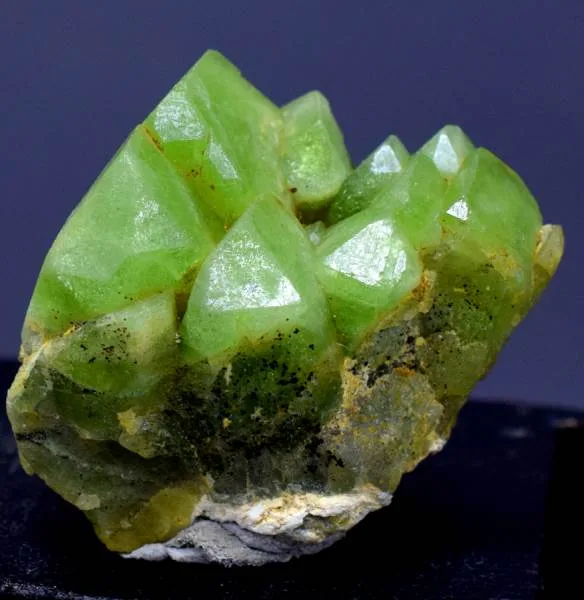
Appearance
The orthorhombic crystal system is where the peridot crystalizes. The color spectrum of peridot includes yellow, yellow-green, olive-green, brownish, and occasionally lime-green or emerald-ish tones. When polished, peridot has a vitreous luster, which gives it a glass-like appearance.
Geographical Distribution
Deep under the Earth’s mantle, volcanic rocks are the main source of peridot. Typically, it comes from places like Egypt, Pakistan, Myanmar, and the United States. Large amounts of this captivating gemstone can be found in the San Carlos Apache Indian Reservation in Arizona, which is the most well-known source of peridot.
History
The history of peridot begins more than 3,500 years ago, when it was found for the first time on the Red Sea volcanic island of Zabargad. Peridot was especially beloved by the ancient Egyptians, who thought it was the gemstone of the sun deity Ra. The stunning green colour of peridot, which seemed even more vivid at twilight, earned it the nickname “evening emerald” and was frequently used. Ancient Roman noblewomen and high-ranking officials wore peridot jewelry as a sign of riches and prosperity.
Metaphysical Properties
Peridot, also referred to as the “stone of compassion,” is thought to balance emotions and the mind, promoting excellent health, peaceful sleep, and harmony in relationships.

Chemical Composition
Peridot has the chemical formula (Mg,Fe)2SiO4, which is made up of silicon, magnesium, and iron.
Types
Although peridot is most often thought of for its vivid green tint, it actually comes in a variety of shades, from olive green to yellowish-green. The amount of iron present in the crystal structure affects how intense the color is. Certain peridot gemstones may have a little brownish or golden tint, which gives them an individual touch to their overall beauty.
Peridot comes in a variety of hues, but it also comes in numerous types that can be identified by their origin or unique characteristics. For instance, Arizona peridot is highly prized for its vivid green color and is frequently referred to as “Arizona peridot.” Other noteworthy types are Pakistani peridot, which frequently has an eye-catching olive-green color, and Burmese peridot, which is renowned for its remarkable clarity.
Uses
Peridot has long been a favorite for jewelry due to its distinctive qualities and vivid green color. Peridot has been used in a variety of jewelry designs, from rings to necklaces, earrings, and bracelets, by ancient cultures to contemporary designers. Because of its adaptability, it can be combined with a wide range of metals, including platinum, silver, and gold, to create gorgeous jewelry designs that suit a variety of tastes and preferences.
Peridot is a common element in modern jewelry designs, lending refinement and beauty to any combination. Its vibrant green hue goes well with both formal and informal clothing, making it a useful gemstone for special occasions as well as daily use. Peridot jewelry never fails to enchant and captivate, whether it is set as a solitaire in a sleek pendant or surrounded by diamonds in an elegant ring.
Table





